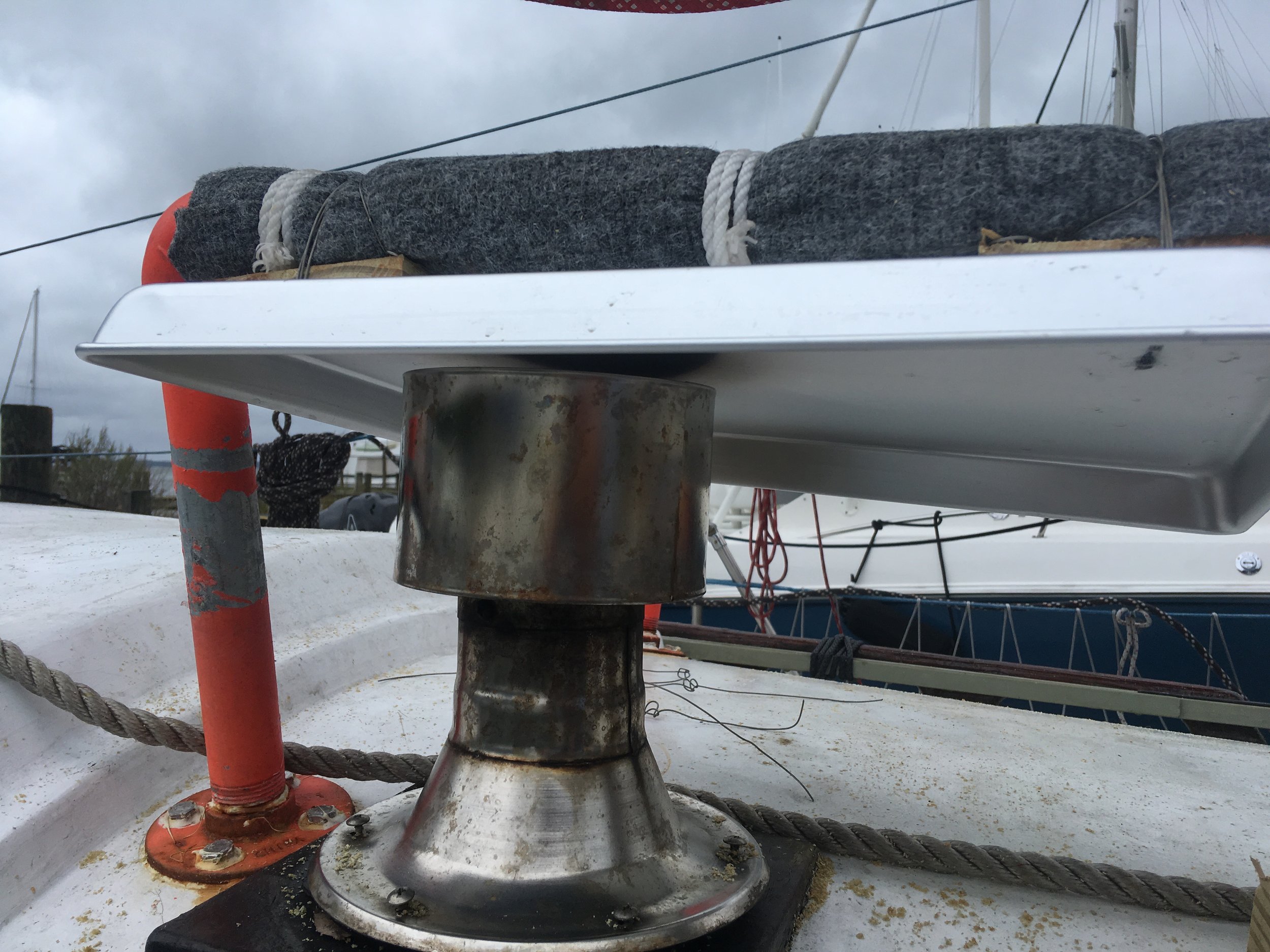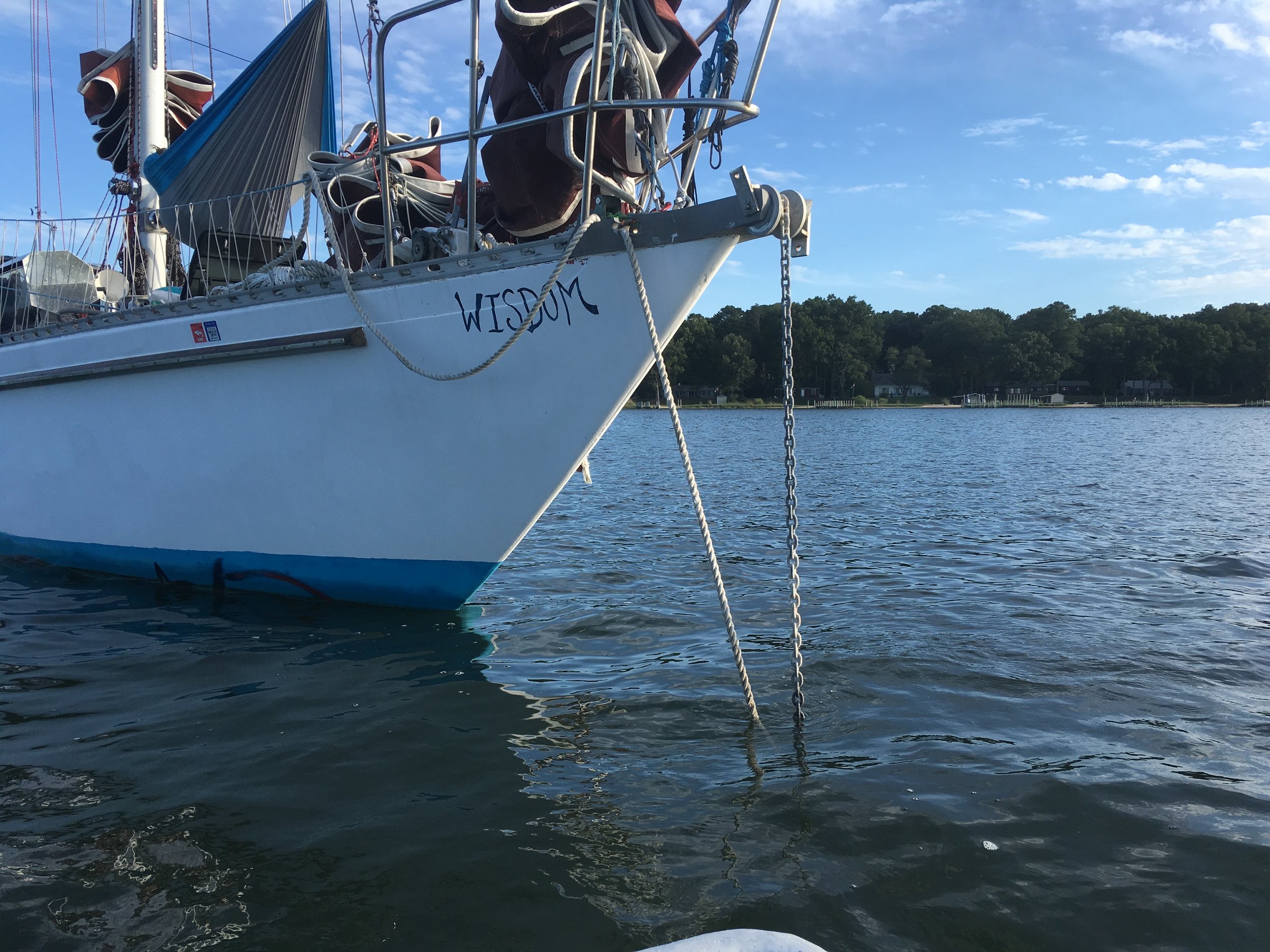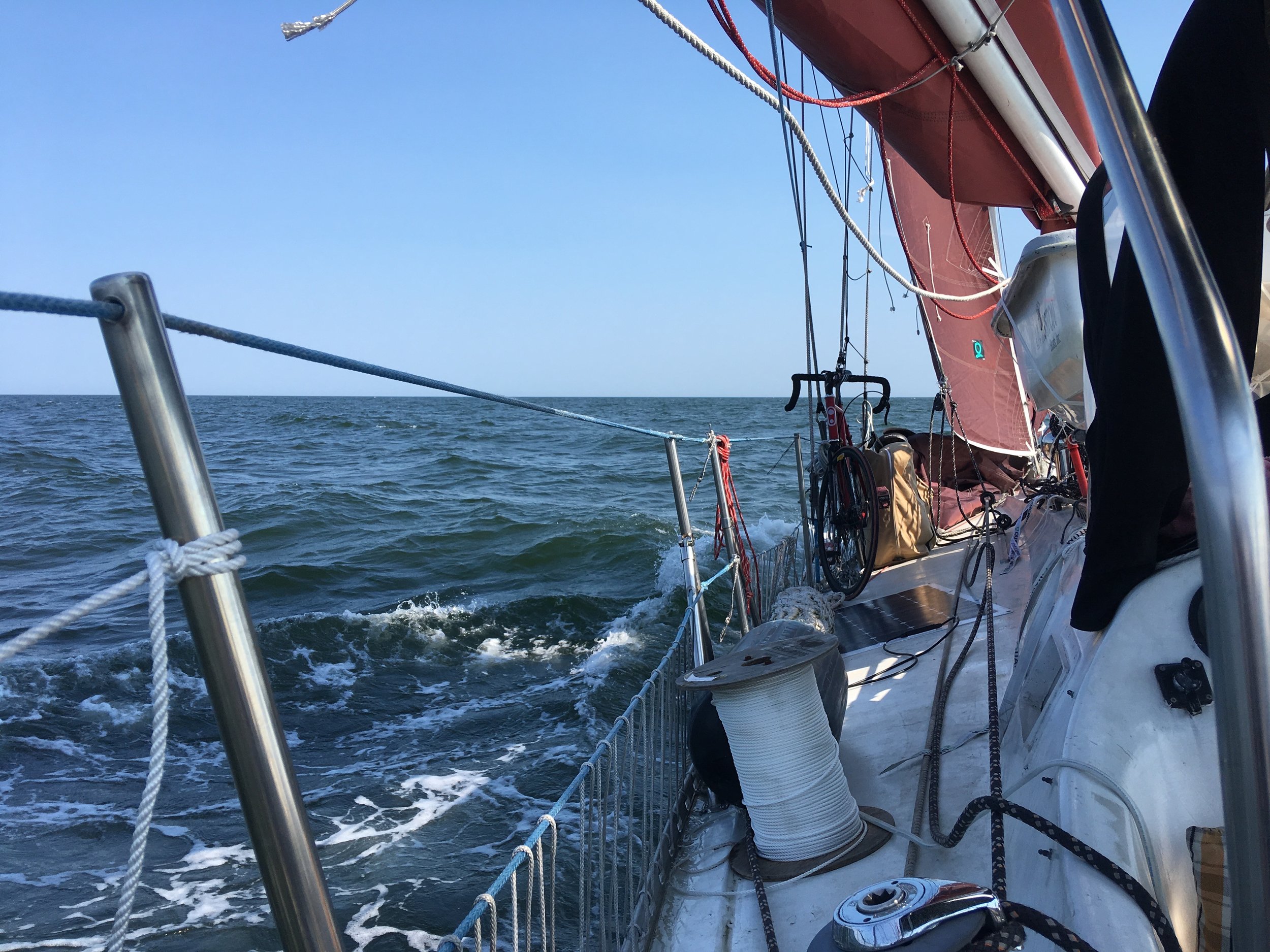Our dinghy lives on a rack mounted above the chimney for our heater. This is not a problem in the warmer months, when we are using the dinghy often and the stove is off, but it can pose a bit of an issue in the cooler months when we would be running the heater to keep us from freezing inside the cabin!
The heat leaving the chimney is pretty darn warm. According to a thermal gun, the chimney itself gets up to around 300F, and the carpeting over the dinghy bedrail was getting up to 180F until we shut the heater down to save the carpeting! This test was performed without the dinghy in place, as we did not want to risk harming the fiberglass hull with this heat.
To allow us to heat our home while we cruise with the dinghy on the deck, we opted to install a heat shield.
The concept was simple, the heat leaving the chimney needed to be blocked from rising into the dinghy. It needed to be open to the sides that way the heat could be vented away, and it had to be able to surive in the marine environment. Lastly, it had to be inexpensive as we are currently cruising on a tight budget!
A visit to True Value brought us to our solution! We bought an aluminum baking sheet for a few dollars and secured it in place! The rolled edges of the pan will avoid any injuries to our shins as we walk around this area of the deck, and the aluminum itself will not rust away in the salt air. The large surface area of aluminum will also act as an efficient heat sync, dissipating the heat from the chimney as we sail.
To test out the setup, the heater was ignited and allowed to get up to temperature. The heater itself was 550F, while the top of the chimney was only 120F. The air coming out of the chimney was a sturdy 200F and the heat shield stayed at 100F for the duration of the test. Best of all, the carpet never got above 90F (which was the ambient temperature on that day). To keep the aluminum slightly off the rail, I cut and re sawed a 2x4 to create small wooden spacers that would provide a dead air space for heat to escape from. This increases the air flow between the aluminum and the carpet, keeping everything cooler.
The top of the chimney might seem a bit close to the heat shield, but this isn't a large concern as most of the exhaust exits the bottom of the chimney top.
To hold it all in place, I used stainless steel seizing wire, as it allows me to tie a tight lashing, just like with rope, but it will be immune to the heat from the chimney. I tied it very tight that way the pan would not spin or shift around and so that the metal wires would sink into the carpet, remaining slightly in relief of the dinghy hull above.
With the heat shield in place, we feel safe lighting the heater with the dinghy on the deck, knowing that the fiberglass will not catch on fire as we try to keep warm. One other point of mental peace is we won't be using the heater unless it is cold outside, and these cold days will mean a more efficient heat transfer from the aluminum to the air.
Heat shields are very useful tools on a boat. They can allow you to have a very hot object placed very close to heat sensitive materials without the fear of damage or fire.











